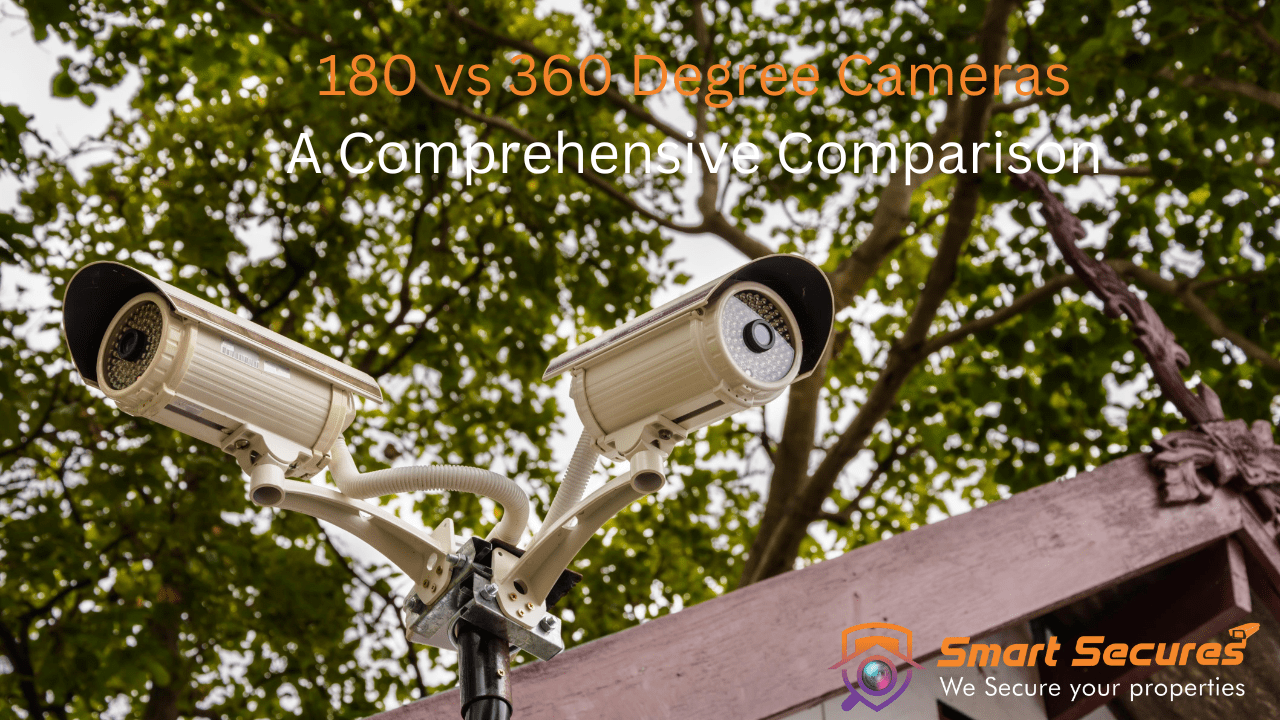Home > Blog > 180 vs 360 Degree Cameras: A Comprehensive Comparison
When it comes to surveillance and security, having the right camera can make all the difference.

When it comes to surveillance and security, having the right camera can make all the difference. Two types of cameras that often get compared are 180-degree cameras and 360-degree cameras. But which one should you choose for your home or business? In this article, we'll dive deep into each camera type's differences, advantages, and ideal uses to help you make an informed decision.
In today’s security-focused world, cameras are essential tools for monitoring and protecting both commercial and residential spaces. The rise of wide-angle lenses has given birth to two powerful contenders in the camera market: 180-degree cameras and 360-degree cameras. While both provide wide coverage, they differ significantly in their functionality and application.
Before diving into their comparisons, let’s break down what each of these cameras offers.
A 180-degree camera is designed to cover half of a full circle, or 180 degrees of a given space. This means it provides a wide field of view, but its coverage is limited compared to 360-degree cameras.
Key Features:
A 360-degree camera offers a complete, spherical view of its surroundings. It can capture footage in every direction at once, making it perfect for wide-open spaces or areas that require constant surveillance.
Key Features:
Now that we have a basic understanding of both camera types, let’s take a closer look at their differences in terms of performance, CCTV installation services, and usage.
The most obvious difference between a 180-degree camera and a 360-degree camera is the field of view:
Both types of CCTV cameras have relatively simple installation processes, but they vary depending on their orientation and the environment.
A 180-degree camera is ideal for areas that require focused monitoring. Here are a few situations where these cameras work best:
360-degree cameras shine when you need full surveillance in larger or open spaces. Consider using them in the following scenarios:
Choosing between a 180-degree or 360-degree camera depends on the size of the area you're looking to monitor, the complexity of your security needs, and your budget. Here’s a quick guide to help you make a decision:
Both 180-degree and 360-degree cameras offer unique advantages, but the decision ultimately depends on your specific needs. If you require more focused surveillance on a smaller area, a 180-degree camera will serve you well. However, for larger, more open spaces where you need full coverage, the 360-degree camera is the better option.
By understanding the differences in coverage, installation, and usage, you can choose the camera that fits your security needs best.
A 180-degree camera might not be sufficient for large rooms. It works best in smaller or more confined spaces.
Yes, 360-degree cameras tend to be pricier than 180-degree cameras due to their advanced technology and broader coverage.
Yes, many 180-degree cameras are designed for outdoor use, ideal for monitoring driveways and entryways.
Due to the wide field of view, there might be slight image distortion, but most 360-degree cameras offer good quality for surveillance.
For home security, 180-degree cameras<

5,852 reviews